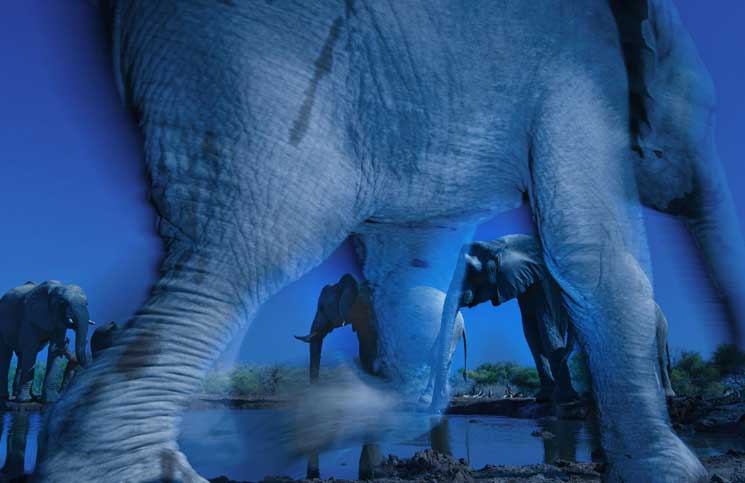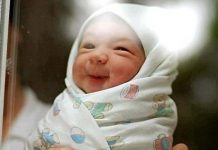The results of the wildlife photographer of the year 2013 competition have been announced at London’s Natural History Museum. The overall winner is South African photographer Greg du Toit for his picture Essence of Elephants, a portrait of elephants in Botswana. Here is a selection of some of the winning images.
South African photographer Greg du Toit has been named Wildlife Photographer of the Year 2013 by the panel of international judges for his image Essence of elephants, a mysterious and energetic portrait of African elephants in the Northern Tuli Game Reserve in Botswana.
Beating almost 43,000 other entries from across 96 countries, Greg’s image will take centre stage at the exhibition, opening at the Natural History Museum on 18 October. The acclaimed show celebrates the rich array of life on our planet, reflecting its beauty and also highlighting its fragility. After its London premiere, the exhibition embarks on a UK and international tour, to be enjoyed by millions of people across the world.
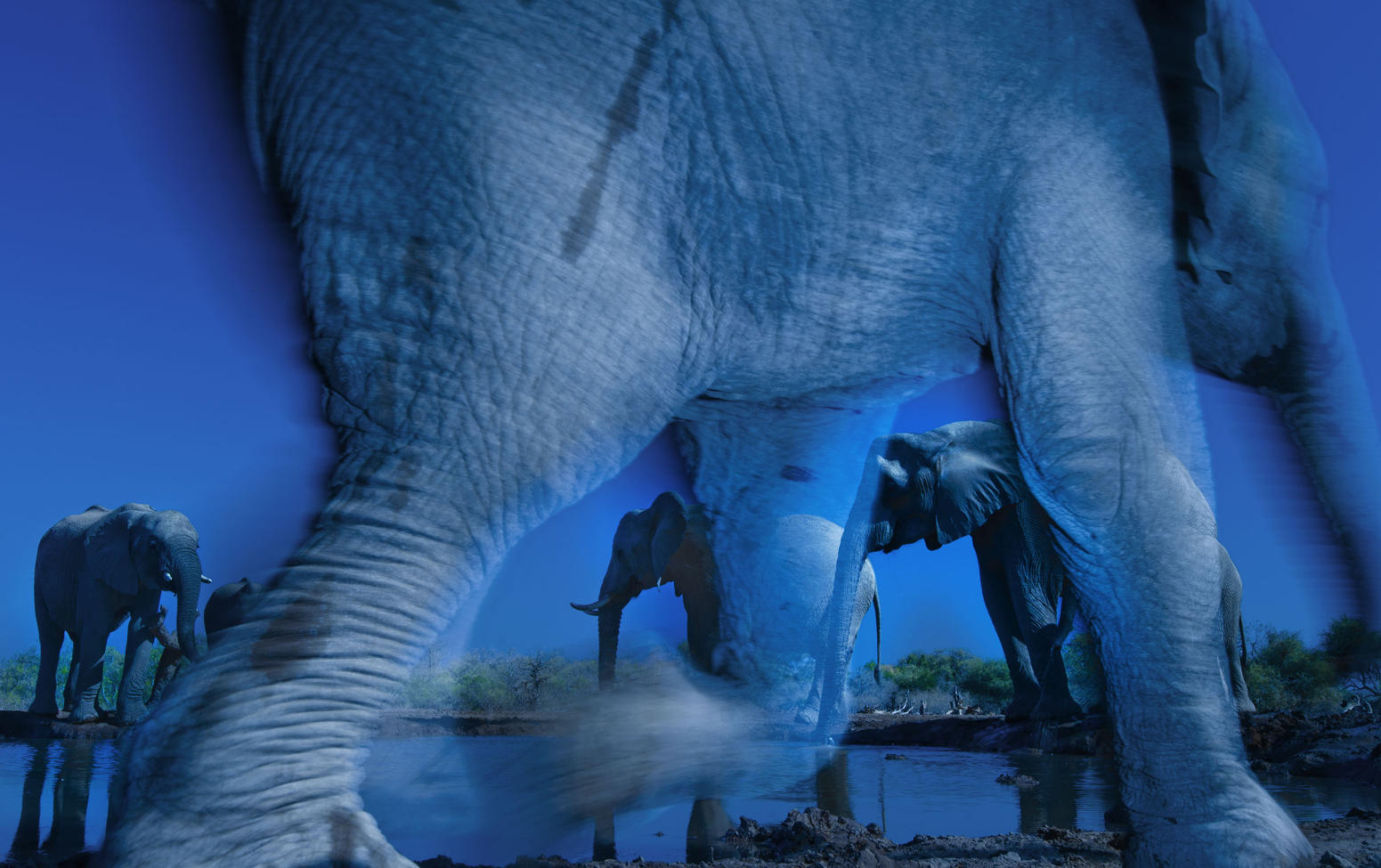
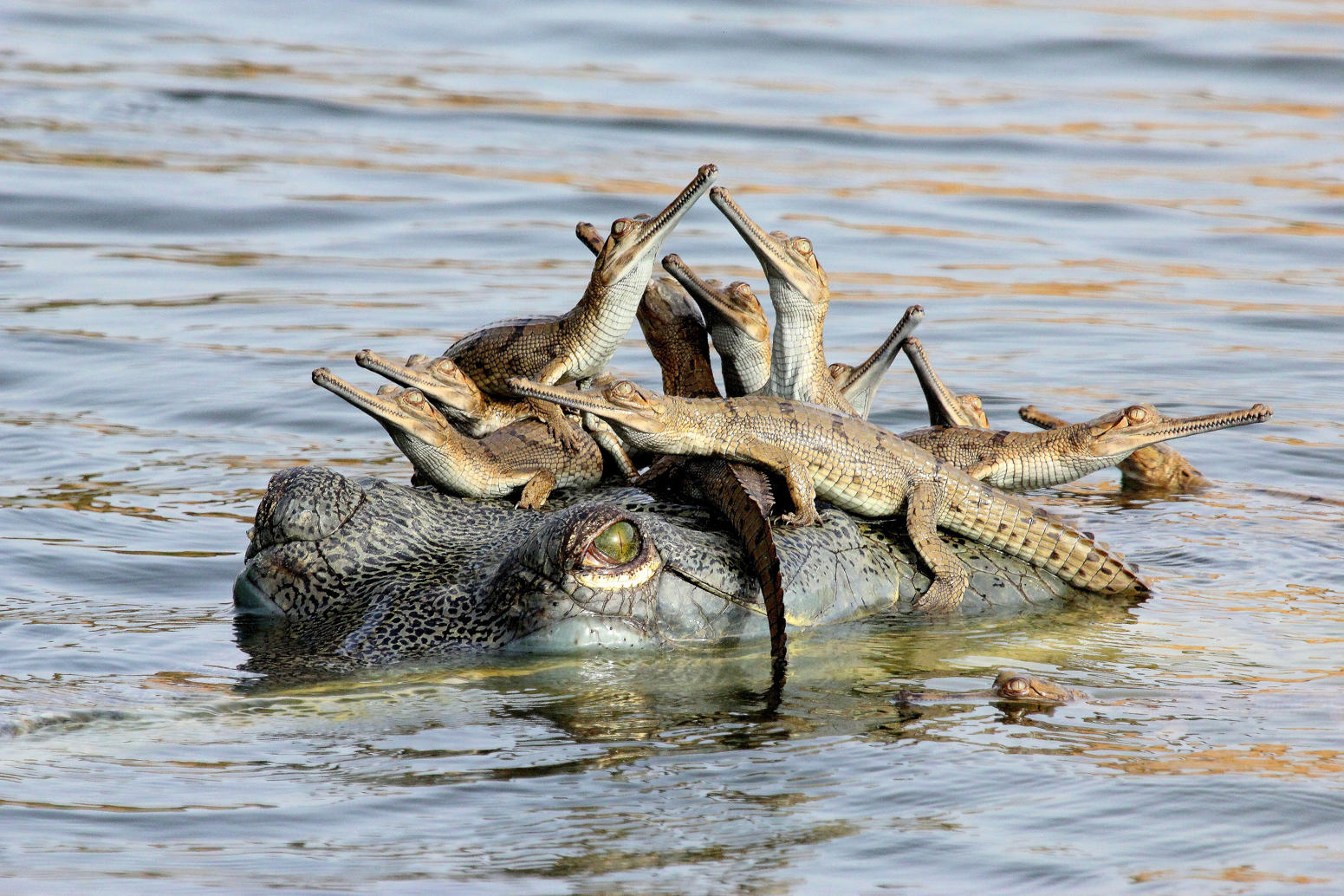
Udayan camped near a nesting colony of gharial crocodiles on the banks of the Chambal River – two groups of them, each with more than 100 hatchlings. Before daybreak he crept down and hid behind rocks beside the babies. ‘I could hear them making little grunting sounds,’ said Udayan. ‘Very soon a large female surfaced near the shore, checking on her charges. Some of the hatchlings swam to her and climbed onto her head.’ She was the chief female of the group, looking after all the hatchlings. Though he saw a few more females and a male, they never came close. Gharials were once found in rivers all over the Indian subcontinent. Today just 200 or so breeding adults remain in 2% of the former range. ‘The Chambal river is the gharial’s last stronghold,’ said Udayan, ‘but is threatened by illegal sand-mining and fishing’

The fact that most images of polar bears show them on land or ice says more about the practical difficulties faced by humans than it does about the bears’ behaviour. With adaptations such as thick blubber and nostrils that close, polar bears are, in fact, highly aquatic. They spend most of their time hunting seals on sea ice and are capable of swimming for hours at a time. Souders took his Zodiac boat to Hudson Bay, Canada, in midsummer to rectify this bias. He scouted for three days before he spotted a bear, this young female, on sea ice about 30 miles offshore. The light was special but for a sinister reason. The midnight sun was filtered through smoke from forest fires raging farther south, a symptom of the warming Arctic – the greatest threat facing the polar bear. As more and more sea ice melts earlier and earlier each spring it becomes harder for the bears to hunt the seals they depend on
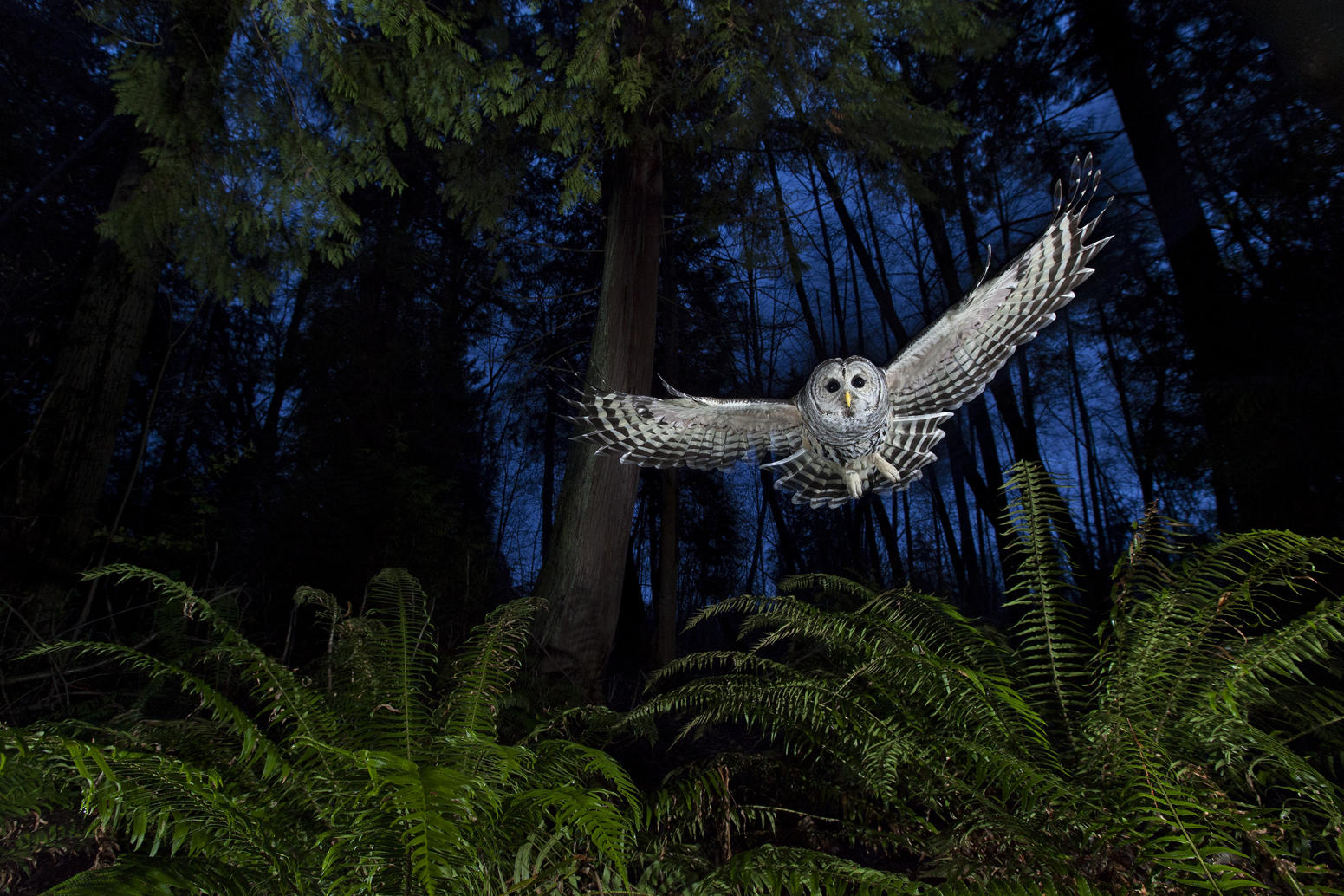
Stefanison’s photography draws on the wilderness skills he acquired over a childhood spent largely outdoors. This female barred owl had a territory near his home in Burnaby, British Columbia. He watched her for some time, familiarising himself with her flight paths until he knew her well enough to set up the shot. ‘I wanted to include the western red cedar and the sword ferns so typical of this Pacific coastal rainforest.’ Setting up his camera near one of the owl’s favourite perches, linked to a remote and three off-camera flashes, diffused and on low settings, he put a dead mouse on a platform above the camera and waited for the swoop that he knew would come. ‘She grabbed the mouse, flew back to her perch and began calling to her mate. It is one of the most exciting calls to hear in the wild’
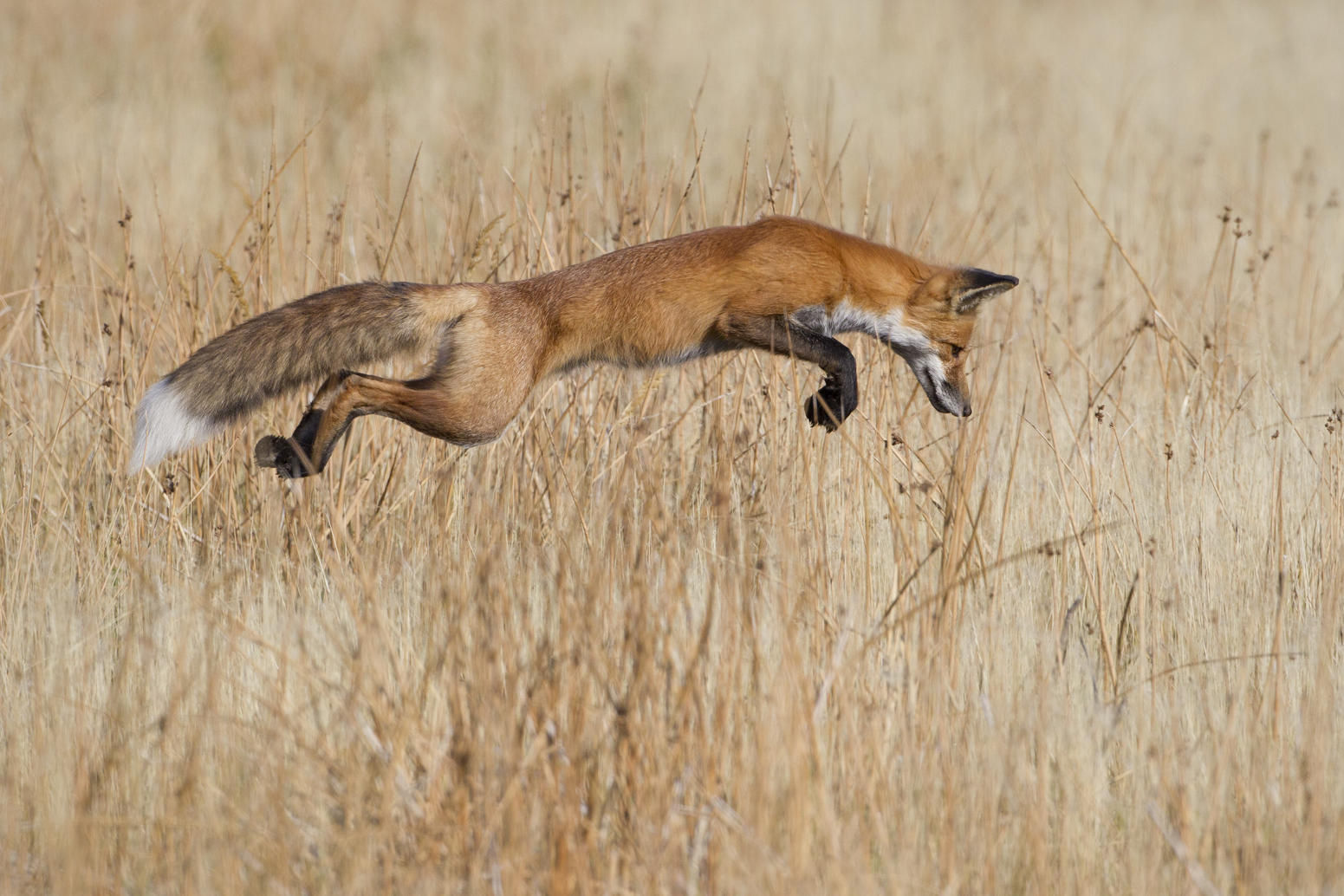
‘Anticipating the pounce – that was the hardest part,’ said Stefanison, who had come to Yellowstone national park, Wyoming, US, in search of wildlife as much as the spectacular landscape. He had found this fox, his first ever, on his last day in the park. It was so absorbed in hunting that Stefanison had plenty of time to get out of the car and settle behind a rock. It quartered the grassland, back and forth, and then started staring intently at a patch of ground, giving Stefanison just enough warning of the action to come. When it sprang up Stefanison got his shot. And when it landed the fox got his mouse
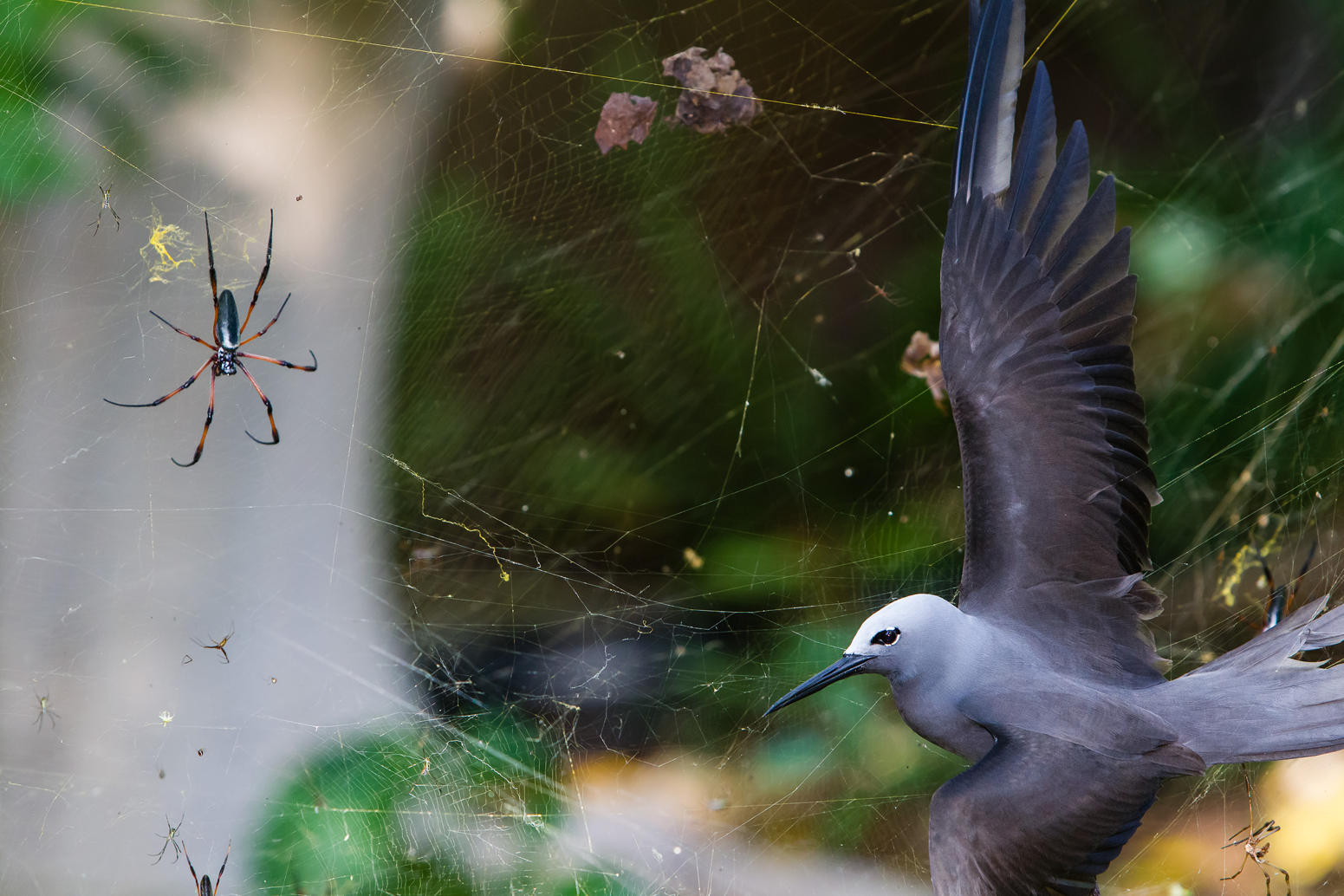
In May the seafaring lesser noddies head for land to breed. Their arrival on the tiny island of Cousine in the Seychelles coincides with peak web size for the red-legged golden orb-web spiders. The female spiders, which can grow to the size of a hand, create colossal conjoined webs up to 1.5m in diameter in which the tiny males gather. These are woven from extremely strong silk and are suspended up to six metres above the ground, high enough to catch passing bats and birds, though it’s flying insects that the spiders are after. Noddies regularly fly into the webs. Even if they struggle free the silk clogs up their feathers so they can’t fly. This noddy was exhausted, said Pretorius, ‘totally still, its fragile wing so fully stretched that I could see every feather’
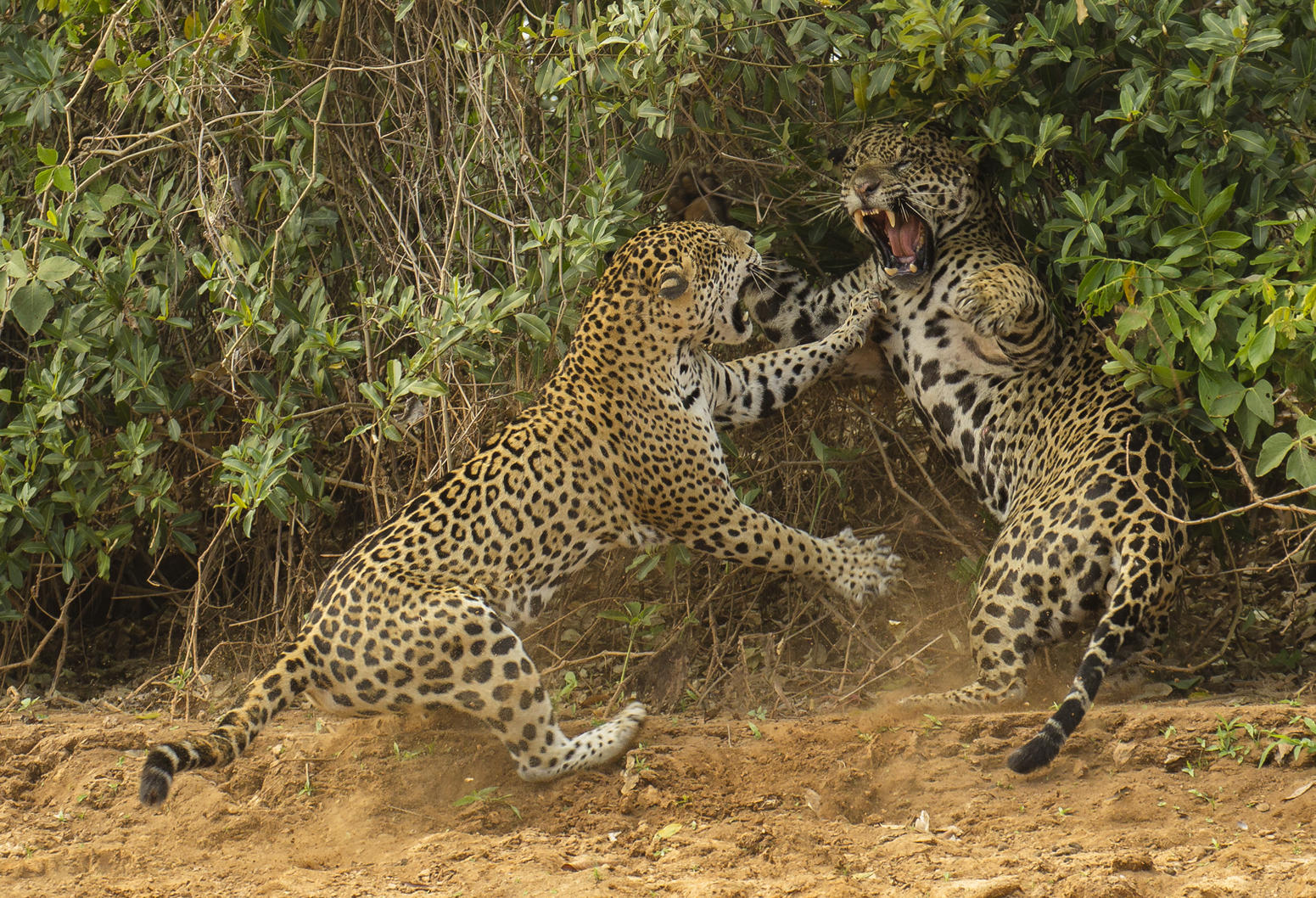
For several hours the noisy sounds of courtship and mating were all McDonald was treated to as he sat, sweltering in the hot sun, in a boat on the Three Brothers River in Brazil’s Pantanal. So when the female jaguar finally emerged from the undergrowth and walked down to the river to drink, McDonald was grateful for the photo opportunity. But that was just a start. After slaking her thirst the female flopped down on the sand. Then the male appeared. After drinking and scent-marking he approached the female, who was lying in what appeared to be a pose of enticement. At least that’s what both McDonald and the male thought. She rose, growled and suddenly charged, slamming the male back as he reared up to avoid her outstretched claws. His own claws were sheathed. The pair then disappeared into the undergrowth to resume their courtship, leaving McDonald with a sense of awe and a rare, winning image
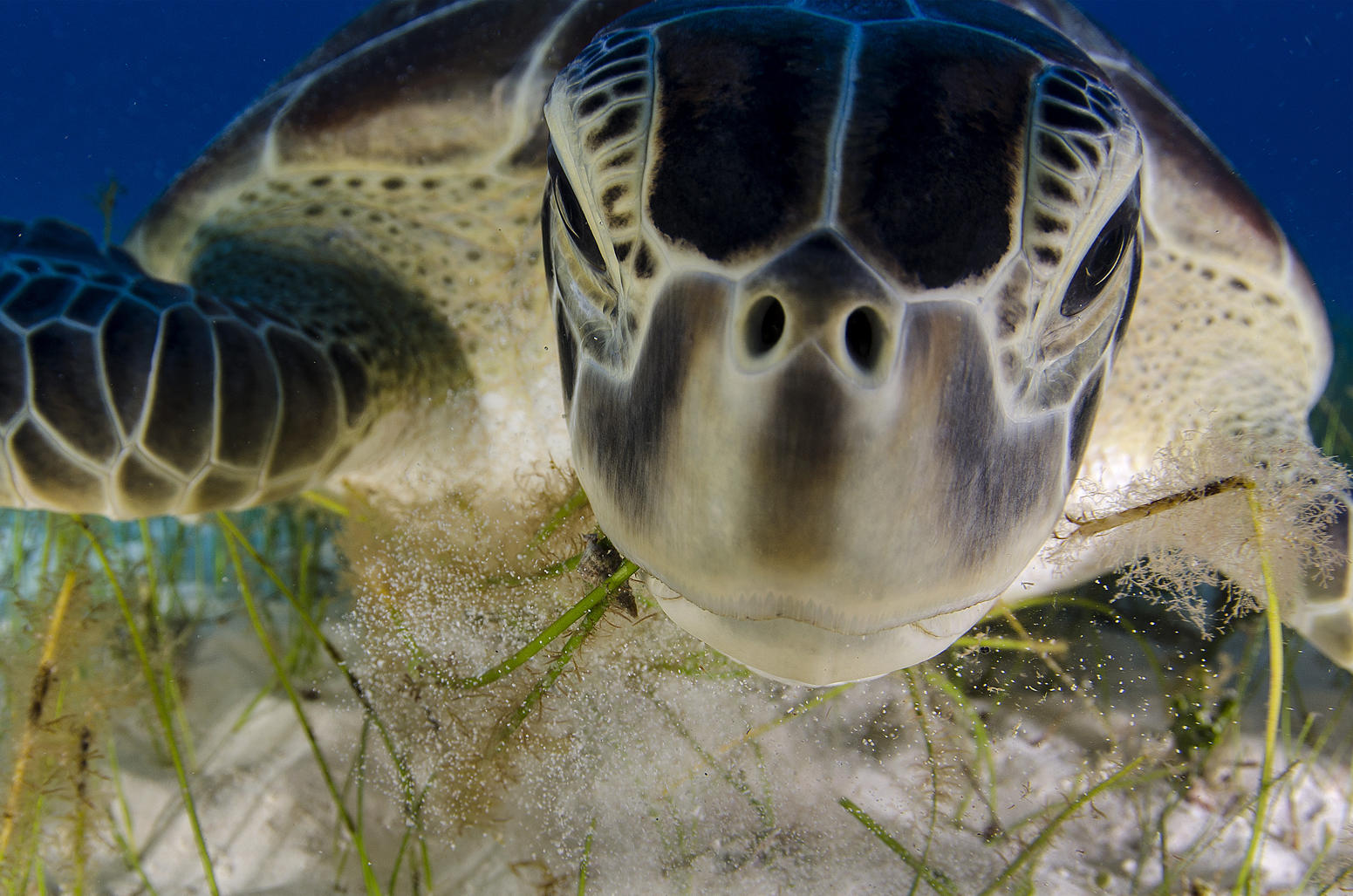
The beaches of the Yucatan Peninsula, Mexico, near Cancún are traditional nesting sites for the endangered green turtle. But as Cancún has grown as a holiday and dive resort, development has reduced the area available to turtles. Today, though, many nest sites are protected, there are turtle hatcheries to help numbers increase, and there is publicity to help local people and resort owners value the natural riches of the region. Sandoval earns enough from tourism photography to allow him time to document his beloved wildlife. ‘The turtles are so used to seeing people in the water that they think we’re just part of the environment,’ said Sandoval, which means he has been able to get to know individuals, recognising them from the markings on their faces. ‘This metre-long female, grazing on seagrass, took no notice of me, apart from glancing up briefly’
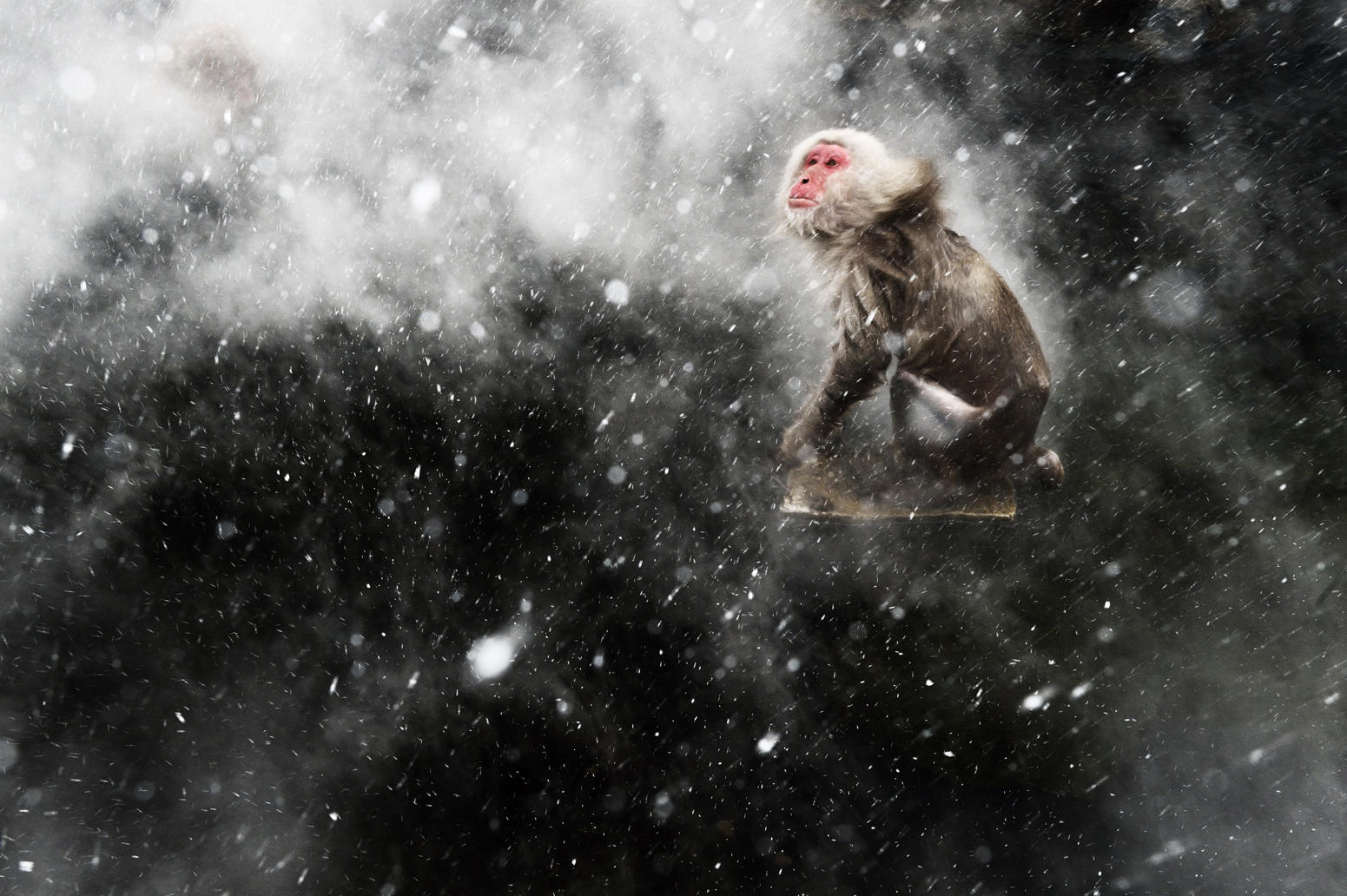
When photographing the famous Japanese macaques around the hot springs of Jigokudani, central Japan, Doest had become fascinated by the surreal effects created by the arrival of a cold wind. Occasionally a blast would blow through the steam rising off the pools. If it was snowing the result would be a mesmerising pattern of swirling steam and snowflakes, which would whirl around any macaques warming up in the pools. But capturing the moment required total luck – for Doest to be there when the wind blew and for the monkeys to be in the pool. For that luck to arrive he had to wait another year. Returning the next winter he determined to get the shot he’d been obsessing about. He set up using a polariser to remove reflections from the water and create a dark contrasting background, and got ready to use fill-flash to catch the snowflakes
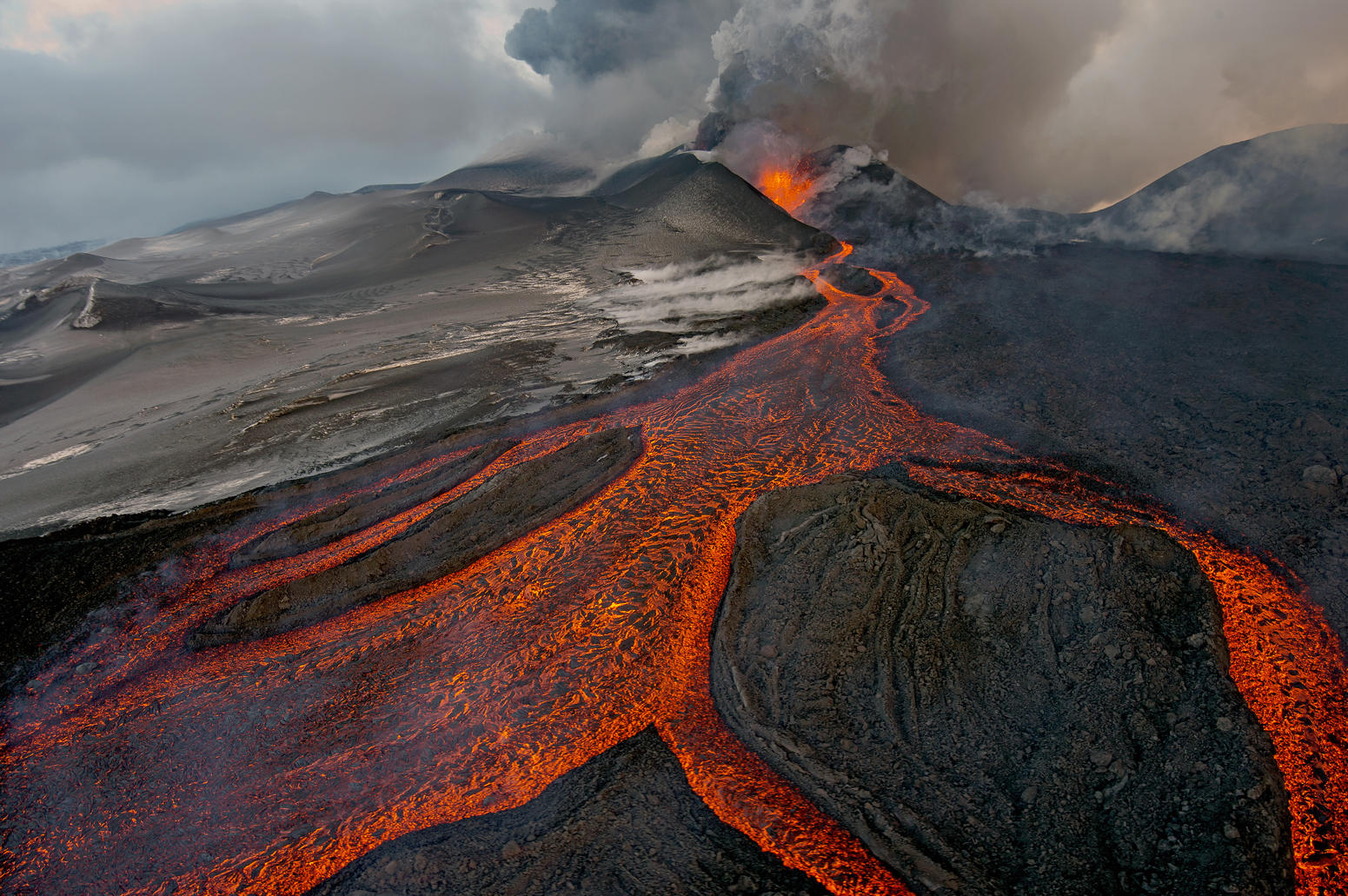
On 29 November 2012 Gorshkov received the call that he had long hoped for. Plosky Tolbachik – one of two volcanoes in the Tolbachik volcanic plateau in central Kamchatka, Russia – had begun to erupt. ‘I’ve gone to the area many times but it had been 36 years since the last eruption,’ he said. ‘So I dropped everything and went.’ The only way to approach it was by helicopter, but extreme cold (- 40°C) meant Gorshkov had to wait until it was warm enough for the helicopter to take off. Flying towards the volcano, the cloud of ash, smoke and steam was so thick that he couldn’t see the crater. But every so often a strong wind blew the clouds away and he could see a 200m-high fountain of lava spouting out of the crater, and fast-flowing, molten rivers of lava running down it – some of these would travel for miles, sweeping away everything in their path
